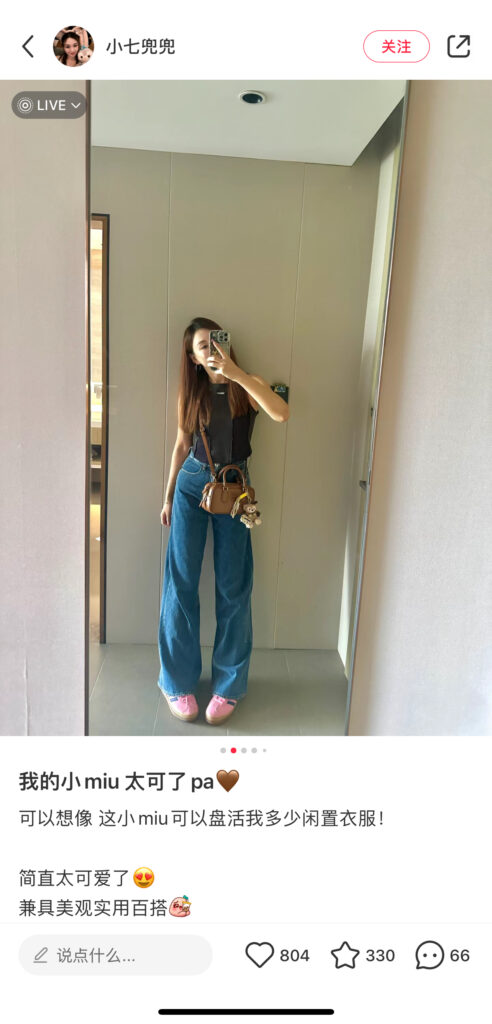Xiaohongshu, also known as Little Red Book, has rapidly become a pivotal platform for brands looking to engage with Chinese consumers. For overseas brands, managing reputation on Xiaohongshu presents unique challenges and opportunities. With its focus on community-driven content and authentic experiences, understanding how to navigate this landscape is essential. Then how international brands manage reputation on Xiaohongshu? In this article, Deep Digital China will share in details.

1. Understand the Local Audience
The first step in managing reputation is to understand the local audience. Chinese consumers have distinct preferences, values, and cultural nuances that differ significantly from Western audiences. Conducting thorough research can help brands tailor their messaging effectively.
For example, a skincare brand based in Europe should study the beauty trends popular in China. By analyzing local preferences, such as the demand for natural ingredients or anti-aging products, the brand can create content that resonates with Chinese consumers.
2. Monitor Brand Mentions
Regularly monitoring brand mentions and user-generated content is crucial. Xiaohongshu thrives on user reviews and experiences, so keeping an eye on what users are saying about your brand can help identify potential issues early.
For example, brand can track hashtags related to its services. If users post negative experiences about a specific product or service, brand can respond promptly to address any concerns and improve its offerings.
3. Engage Actively with Users
Active engagement with users is vital for building a positive reputation. Responding to comments, answering questions, and acknowledging feedback demonstrates that the brand values its customers’ opinions.
4. Leverage Influencer Partnerships
Collaborating with local influencers can significantly enhance a brand’s reputation. Influencers have established trust within their communities and can effectively communicate your brand’s values and offerings.
Here is an example of a famous overseas fashion brand Miumiu. They partner with popular Chinese fashion influencers to showcase its latest collection. By having the influencer wear and promote the clothing, the brand gains credibility and reaches a broader audience.


5. Create Authentic Content
Authenticity is crucial on Xiaohongshu. Brands must focus on creating genuine content that reflects their values and resonates with local consumers. Overly polished or promotional content may not perform well.
If you are a luxury skincare brand, you can share user-generated content featuring real customers using their products. By showcasing authentic testimonials and experiences, you can build trust and encourage potential customers to try their products.
6. Address Negative Feedback Transparently
Negative reviews are inevitable, but how brands respond can greatly impact their reputation. Addressing feedback transparently and constructively shows that the brand is committed to improvement.
If a consumer posts a negative review about a product’s effectiveness, the brand should respond with empathy and offer a solution, such as a refund or replacement. This approach demonstrates accountability and can turn a negative experience into a positive one.
7. Build a Strong Brand Community
Creating a sense of community around your brand can enhance loyalty and reputation. Engaging with users through interactive content and discussions fosters a supportive environment.
8. Utilize Analytics Tools
Using analytics tools to track engagement metrics, sentiment analysis, and user interactions is essential for reputation management. These insights can help brands understand public perception and adjust their strategies accordingly.
For example, you can analyze which types of posts generate the most engagement on Xiaohongshu. If product review videos receive higher interaction than static images, you can focus on producing more video content.

9. Establish Clear Brand Guidelines
Having clear brand guidelines ensures consistency in messaging across all platforms, including Xiaohongshu. Consistency reinforces brand identity and promotes recognition, which positively influences reputation.
10. Prepare for Crisis Management
In the event of a reputation crisis, having a crisis management plan is essential. Quickly identifying the issue and communicating transparently with your audience can help mitigate damage.
If an overseas brand faces backlash due to a product recall, it should issue a public statement acknowledging the situation. Providing a clear action plan for resolution can reassure customers and demonstrate the brand’s commitment to safety and quality.
Managing reputation for overseas brands on Xiaohongshu requires a proactive and strategic approach. By understanding the local audience, monitoring brand mentions, and engaging actively with users, brands can build a positive image.
Moreover, leveraging influencer partnerships, creating authentic content, and addressing negative feedback transparently are essential for long-term success. As the digital landscape continues to evolve, brands that adapt and innovate will be better positioned to navigate the challenges of reputation management on Xiaohongshu. By implementing these strategies, overseas brands can cultivate a strong, positive presence that resonates with their audience, ultimately leading to sustained success in the Chinese market. If you are looking for a local agency to help you about online reputation management on Xiaohongshu, please don’t hesitate to contact Deep Digital China.

